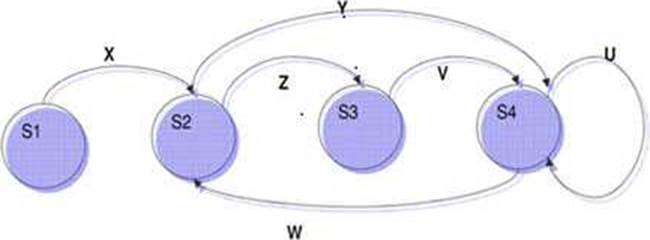ISTQB CTFL_Syll2018 ISTQB Certified Tester Foundation Level (Syllabus 2018) Online Training
ISTQB CTFL_Syll2018 Online Training
The questions for CTFL_Syll2018 were last updated at Dec 14,2025.
- Exam Code: CTFL_Syll2018
- Exam Name: ISTQB Certified Tester Foundation Level (Syllabus 2018)
- Certification Provider: ISTQB
- Latest update: Dec 14,2025
Which of the following statements about use-case testing are most accurate?
(i) In a use-case diagram an actor represents a type of user.
(ii) Use-cases are the most common test basis for unit testing.
(iii) A use-case describes interactions between actors.
(iv) An actor is always a human user that interacts with the system.
(v) Test cases can be based on use-case scenarios.
(vi) Use-case testing will often identify gaps not found by testing individual components.
- A . ii, iii, iv, v
- B . i, iii, v, vi
- C . i, ii, iv, v
- D . iii, iv, v, vi
It is recommended to perform exhaustive tests for covering all combinations of inputs and preconditions.
- A . Yes, it’s strongly recommended.
- B . No, risk analysis and priorities should be used to focus testing efforts
- C . Yes, and it’s also necessary to include all the exit combinations
- D . Only the expert testers can make exhaustive tests.
Refer to the exhibit

Given the following State Transition diagram, match the test cases below with the relevant set of state transitions.
(i) X-Z-V-W
(ii) W-Y-U-U
- A . (i) = S1 C S2 C S3 C S4 C S2 and (ii) = S4 C S2 C S4 C S4 C S4
- B . (i) = S1 C S2 C S3 C S4 C S4 and (ii) = S2 CS4 C S4 C S4 C S2
- C . (i) = S2 C S3 C S4 C S2 C S2 and (ii) = S4 C S2 C S4 C S4 C S4
- D . (i) = S2 C S3 C S4 – S4 C S2 and (ii) = S2 CS3 C S4 CS4 C S4
A system calculates the amount of customs duty to be paid:
_ No duty is paid on goods value up to, and including, $2,000.
_ The next $8,000 is taxed at 10%.
_ The next $20,000 after that is taxed at 12%.
_ Any further amount after that is taxed at 17%.
To the nearest $, which of these groups of numbers fall into three DIFFERENT equivalence classes?
- A . $20,000 $20,001 $30,001
- B . $2,000 $2,001 $10,000
- C . $2,000 $8,000 $20,000
- D . $1,500 $2,000 $10,000
What are metrics NOT used for?
- A . To identify the percentage of work done in test environment preparation.
- B . To identify the percentage of work done in test case preparation.
- C . To apply to the RAD development model.
- D . To measure whether dates of test milestones were met.
Which of the following is a white box testing design characteristic?
- A . To be based on specifications
- B . To be based on an analysis of the test basis documentation
- C . To be based on an analysis of the structure of the component or system
- D . To include both functional and non-functional testing
In a system designed to work out the employee tax to be paid:
_ An employee has $4,000 of salary tax free.
_ The next $1,500 is taxed at 10%.
_ The next $28,000 after that is taxed at 22%.
_ Any further amount is taxed at 40%.
Which of these is a valid Boundary Value Analysis test case?
- A . $28,000
- B . $1,500
- C . $33,501
- D . $5,000
What is a test condition?
- A . A statement of test objectives and test ideas on how to test.
- B . An item or event that could be verified by one or more test cases.
- C . The process of identifying differences between the actual results and the expected results for a test.
- D . All documents from which the requirements of a component or system can be inferred.
Which of the following test organizations has the highest level of independence?
- A . Independent testers within the development teams
- B . Independent testers from the user community
- C . Independent test specialists for specific test types, such as usability, performance or certification test specialists
- D . Code tested by another developer from the development team
Which of the following would NOT be a typical target of testing support tools?
- A . Automate activities that require significant resources when done manually
- B . Automate activities that cannot be executed manually
- C . Automate repetitive tasks
- D . Automating repetitive inspections
Latest CTFL_Syll2018 Dumps Valid Version with 314 Q&As
Latest And Valid Q&A | Instant Download | Once Fail, Full Refund

